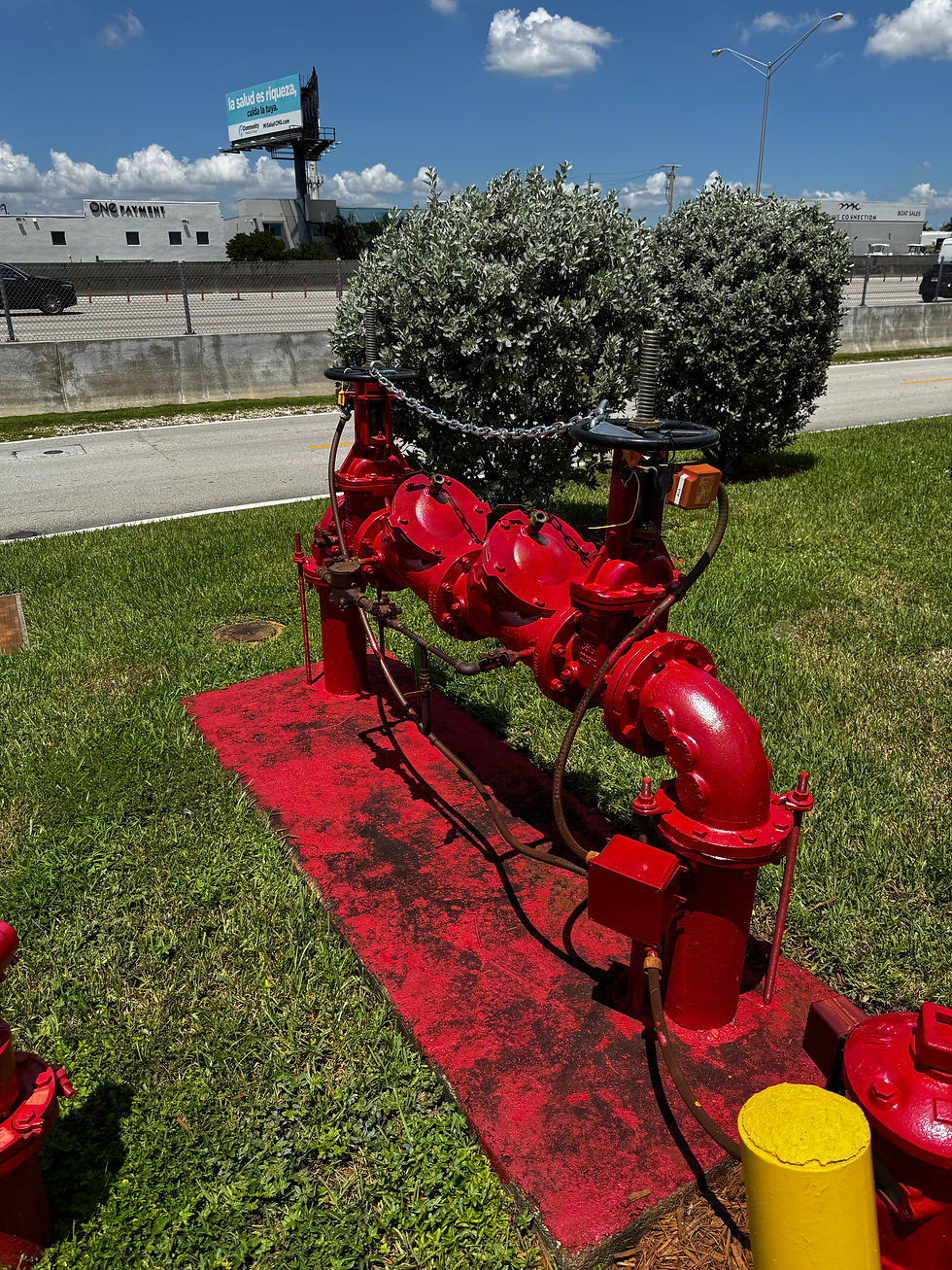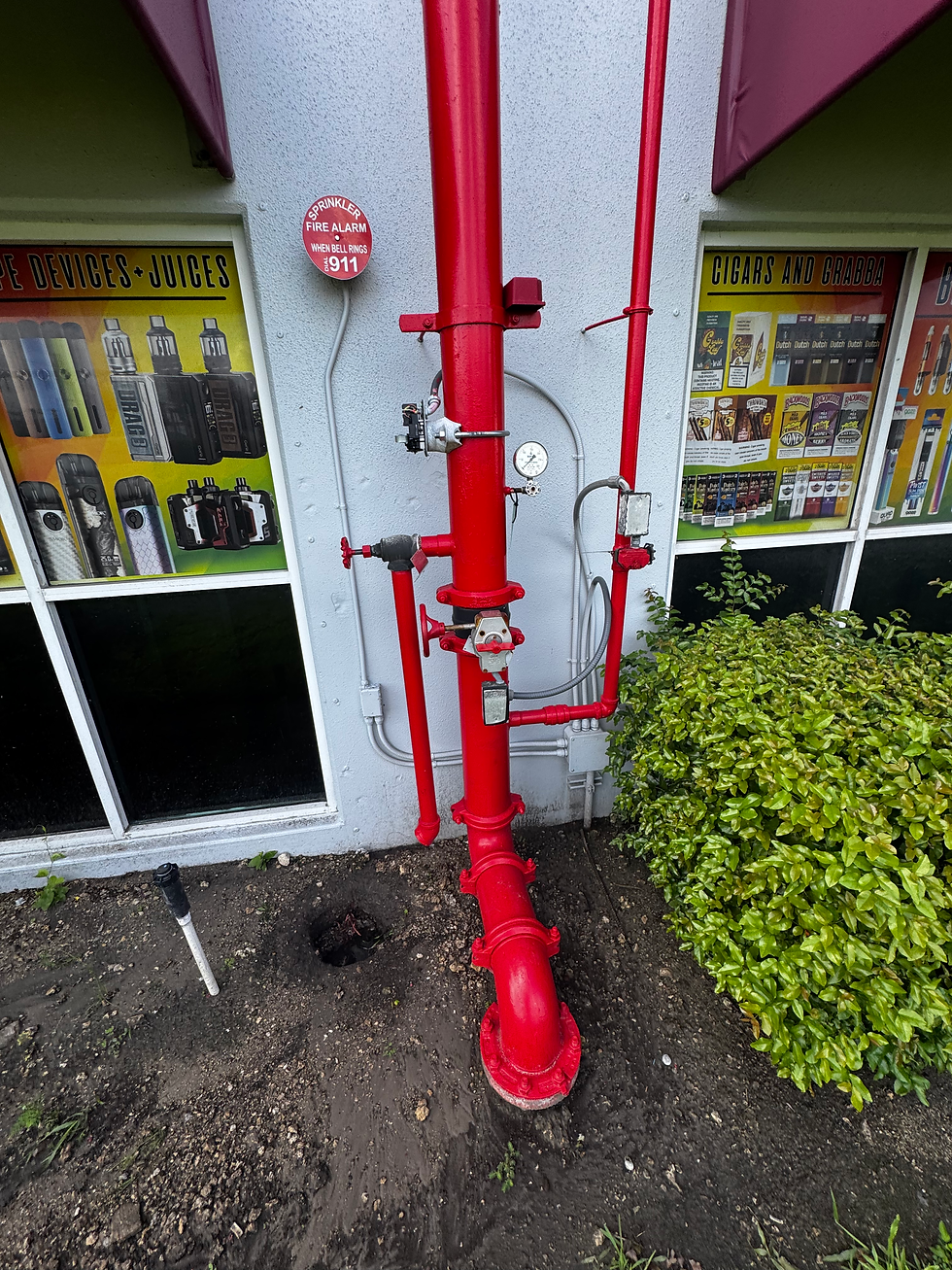The Importance of Regular Backflow Testing
- firejaime
- Aug 31
- 3 min read
Backflow testing is a critical process that ensures the safety and cleanliness of our water supply. Without regular testing, contaminated water can flow backward into clean water systems, posing serious health risks. This article explores why backflow testing is essential, how it works, who can perform it, and practical steps to maintain a safe water system.
Understanding Backflow and the Need for Backflow Testing
Backflow occurs when water flows in the opposite direction from its intended path. This can happen due to changes in water pressure caused by events like water main breaks, heavy water usage, or system malfunctions. When backflow happens, contaminants such as chemicals, bacteria, or debris can enter the clean water supply.
Regular backflow testing is necessary to detect and prevent these issues. Testing ensures that backflow prevention devices are working correctly and that the water remains safe for consumption and use. Without this testing, contaminated water could cause illnesses or damage plumbing systems.
Key reasons for backflow testing include:
Protecting public health by preventing contamination
Complying with local regulations and safety standards
Avoiding costly repairs and liability issues
Maintaining the integrity of water supply systems

How Backflow Testing Works and What It Involves
Backflow testing involves inspecting and evaluating backflow prevention devices to ensure they function properly. These devices are installed in plumbing systems to stop water from flowing backward. The testing process typically includes:
Visual Inspection - Checking the device for any visible damage or wear.
Pressure Testing - Measuring water pressure to confirm the device is preventing backflow.
Valve Operation Check - Ensuring valves open and close correctly.
Reporting - Documenting the test results and recommending repairs if needed.
Testing is usually done annually or as required by local authorities. It requires specialized tools and knowledge to accurately assess the device's condition.
Regular testing helps catch problems early, preventing contamination before it happens. It also ensures compliance with health and safety regulations, which often mandate backflow testing for commercial and residential properties.

Who Can Test Backflows?
Backflow testing should be performed by certified professionals who have the proper training and equipment. These individuals understand the complexities of plumbing systems and the importance of accurate testing.
Certified testers often work for plumbing companies, water utilities, or specialized backflow testing services. They follow strict guidelines and use calibrated tools to ensure reliable results.
Hiring a qualified tester is crucial because improper testing can lead to undetected issues, putting water safety at risk. Property owners should verify the credentials of anyone performing backflow testing to ensure compliance and safety.
If you need reliable backflow testing services, consider contacting certified professionals who can provide thorough inspections and timely reports.

Practical Tips for Maintaining Backflow Prevention Devices
Maintaining backflow prevention devices is essential to keep them functioning effectively between tests. Here are some practical tips:
Schedule Regular Inspections - Even outside of official testing, visually inspect devices for leaks or damage.
Keep Devices Accessible - Ensure valves and devices are easy to reach for maintenance and emergency shutoff.
Protect from Weather - Shield devices from extreme temperatures and weather conditions that could cause damage.
Flush Systems Periodically - Regularly flush water lines to prevent sediment buildup that can impair device function.
Educate Property Users - Inform residents or employees about the importance of not tampering with backflow devices.
By following these steps, property owners can extend the life of their backflow prevention systems and reduce the risk of contamination.
The Broader Impact of Backflow Testing on Community Health
Backflow testing is not just about individual properties; it plays a vital role in protecting entire communities. Contaminated water can spread quickly, affecting schools, businesses, hospitals, and homes.
When backflow prevention devices fail, the consequences can be severe, including outbreaks of waterborne diseases and costly public health interventions. Regular testing helps prevent these scenarios by ensuring that water systems remain secure.
Communities benefit from:
Safer drinking water
Reduced healthcare costs related to waterborne illnesses
Increased public confidence in water quality
Compliance with environmental and health regulations
Investing in backflow testing is an investment in public health and safety.
Taking Action: Scheduling Your Backflow Test Today
Ensuring your water system is protected starts with scheduling regular backflow testing. Whether you manage a commercial property or a residential building, staying proactive is key.
Contact certified professionals for inspections.
Keep records of all tests and maintenance.
Address any issues promptly to avoid contamination risks.
By prioritizing backflow testing, you contribute to a safer water supply for yourself and your community.
Regular backflow testing is a simple yet powerful way to safeguard health and maintain water quality. Don’t wait until a problem arises - take action today to protect your water system.




Comments